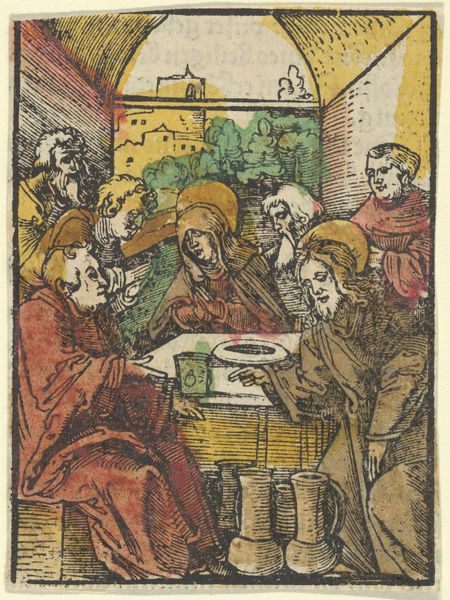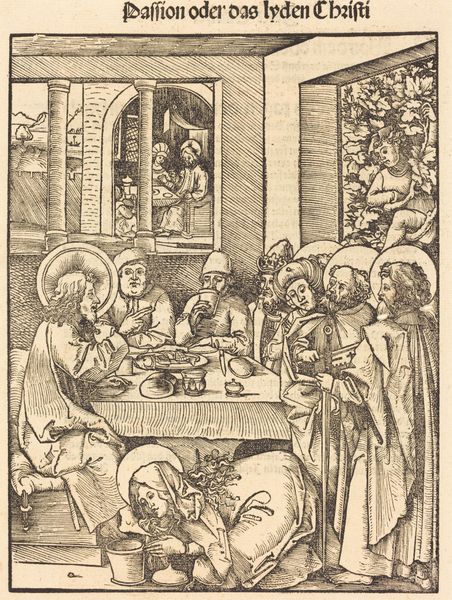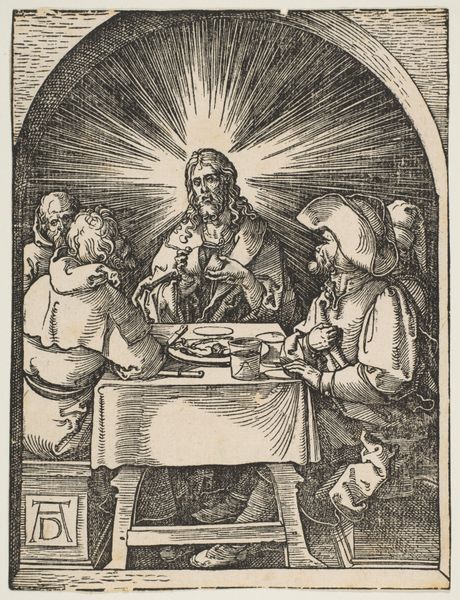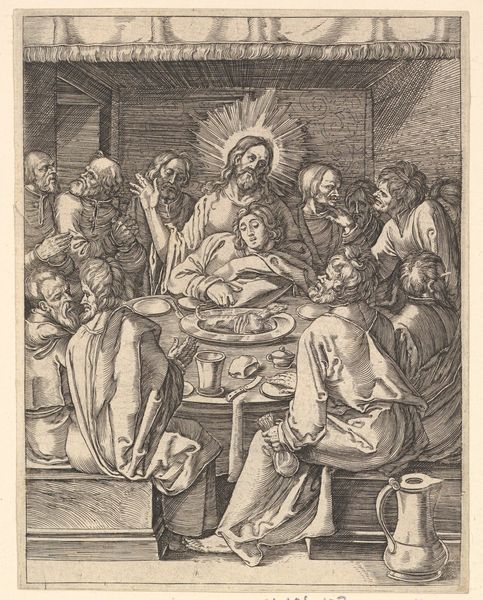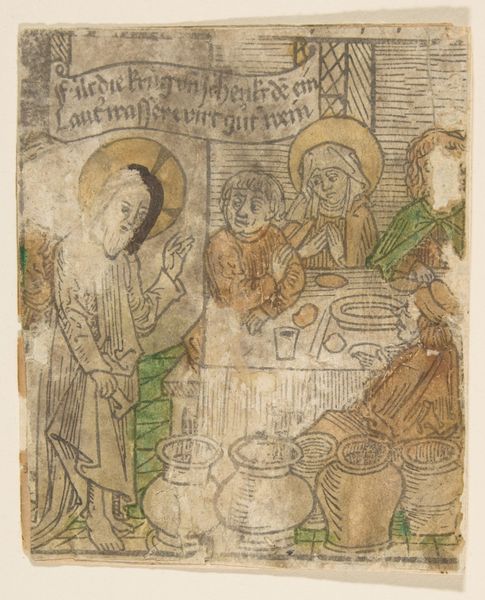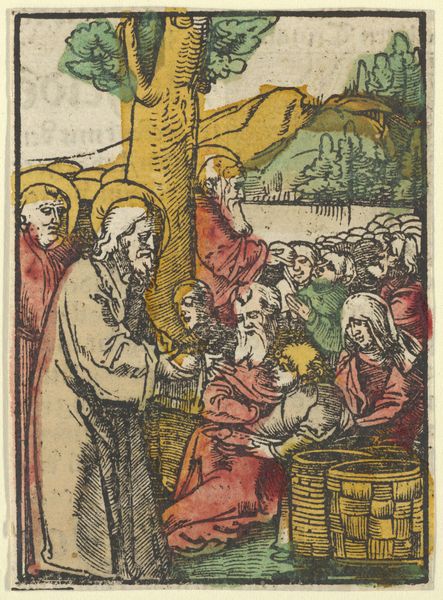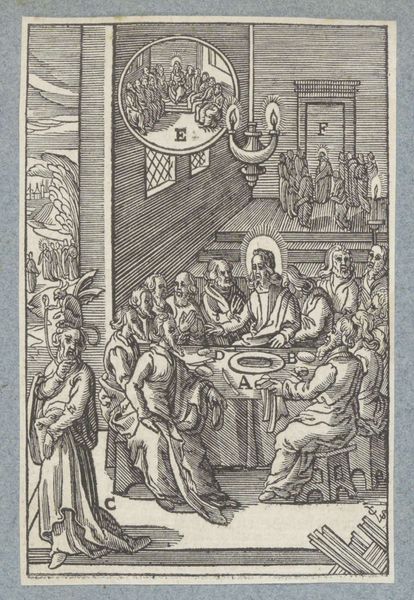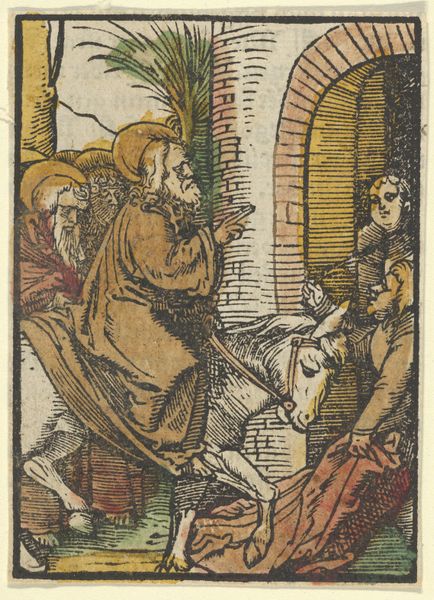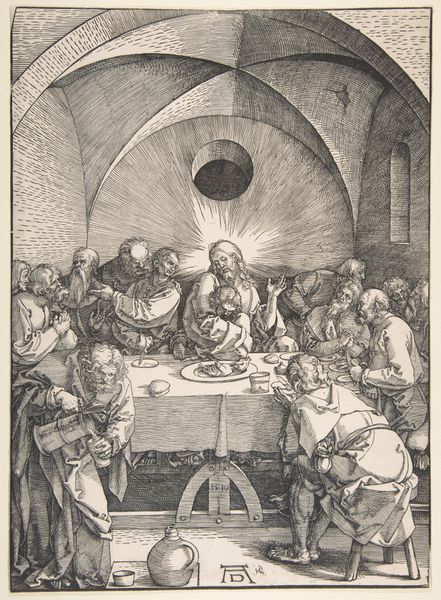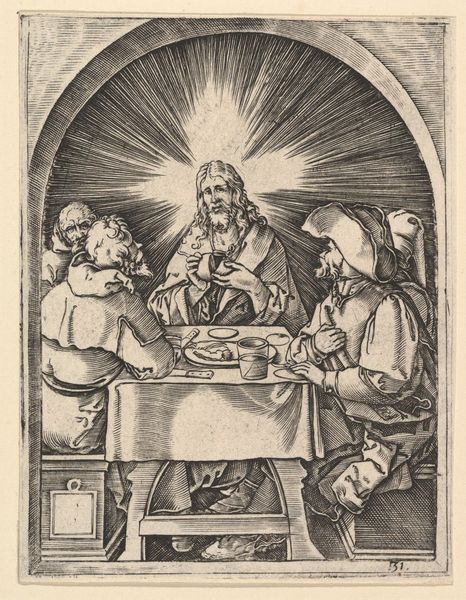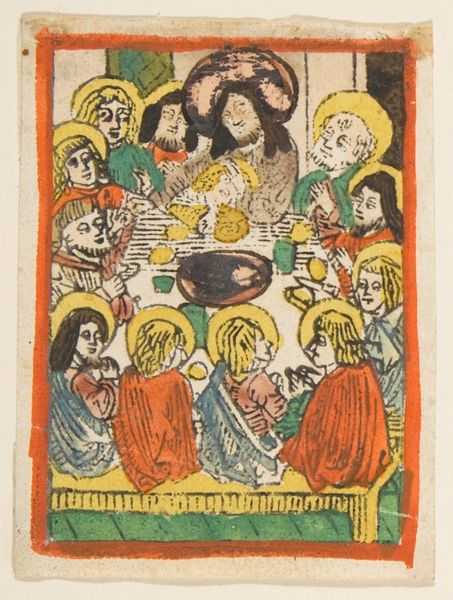
drawing, print, woodcut
#
drawing
#
pen drawing
# print
#
group-portraits
#
woodcut
#
history-painting
#
northern-renaissance
Dimensions: Sheet: 3 11/16 × 2 11/16 in. (9.4 × 6.8 cm)
Copyright: Public Domain
Curator: So here we have "The Last Supper" by Hans Schäufelein, dating back to 1517. It's a woodcut, a print made from a drawing. Editor: It’s so intense! It feels less about serenity and more about the brewing storm, you know? Everyone is so… angular. Curator: Well, consider the context. This is the Northern Renaissance; we are removed from the High Renaissance’s focus on classical ideals, moving into an era marked by religious and social upheaval. Think of the Reformation, which began around the same time. Editor: Right, and you can see it in their faces. These aren’t idealized figures. Look at those etched lines creating shadows under their eyes, their furrowed brows, this tension… it's palpable. They're not just sitting down for dinner. There is heavy subtext, clearly. Curator: Absolutely. Each figure is distinct, their expressions betraying a complex interplay of emotions—doubt, betrayal, loyalty, fear. It makes me consider the symbolic weight carried by the historical context—questions of faith, authority, and power that were hotly debated during this time. I keep thinking of how each character will respond as they grapple with this changing world, and I am sure they knew it too. Editor: That table feels almost claustrophobic. Everything is happening *right now*. I wonder if Schaufelein deliberately compressed the scene, using that window above to act almost as an emotional pressure valve to signal urgency and unrest. This depiction is such a striking visual distillation of anxiety. The food sits almost untouched... Curator: Notice the style! "The Last Supper" is obviously a Christian subject, however, the angular figures mark Schäufelein’s place in the Northern Renaissance tradition. The focus on detailed line work typical of woodcuts offers some intriguing insights, given its relation to print media and text-image culture in this turbulent Reformation period. Editor: The angular lines and earthy tones add such intensity... It is far removed from other serene depictions, where everything looks calm and picturesque, reflecting on divine grace. Here, there are moral considerations, right versus wrong; a group struggling with its conscience in a moment that threatens to redefine them all. Curator: Seeing how this woodcut was born amidst the rise of printmaking is critical in understanding how these images traveled and shaped perceptions. Editor: Ultimately, this image remains not only a relic of its time but continues to challenge and provoke; something quite special about “The Last Supper” in woodcut!
Comments
No comments
Be the first to comment and join the conversation on the ultimate creative platform.
